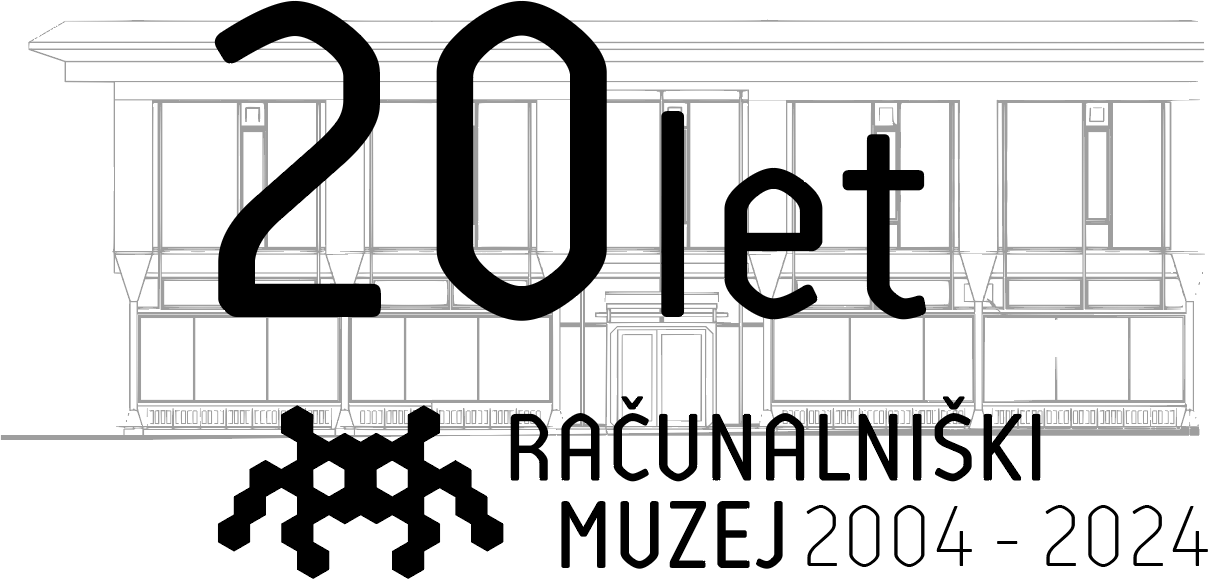Press Release
Institute for Contemporary History and Computer History Museum
Ljubljana, Slovenia, 26.10.2022, for immediate release
The Institute for Contemporary History in co-publishing with the Computer History Museum just published proceedings from the symposium Legacy of Advanced Informatization, presenting expert opinions on software heritage preservation.
This June, an expert panel organized at the Computer History Museum in Ljubljana, Slovenia drew together experts form the fields of computer science, humanities and history to open a relatively new question of perserving the most transient and yet often the most telling part of the history of society’s transformation from analogue to digital.
“Ten local and international experts participated at the symposium. The proceedings have been published as an e-publication to make it as broadly available as possible. We aim to spark wide re-consideration of our collective attitude towards a quintessential part of human experience, which hasn’t quite found an appropriate spot within perservation strategies,” commented the editor Gaja Zornada. Since the proceedings include unique insights into concrete software development in Slovenia and highlight its contemporaneity and sometimes even internationally pioneering timing, the publication has been translated in English as well as Slovene in its entirety.
In his article Roberto di Cosmo from UNESCO Software Heritage foundation equates software code with other forms of human written expression, although it is only executable in machine hardware: “Source code is a special form of knowledge: it is made to be understood by a human being, the developer, and can be mechanically translated into a form to be executed directly on a machine. The very terminology used by the computing community is telling: “programming languages” are used to “write” software. As Harold Habelson wrote as early as 1985, “programs must be written first so that other human beings can read them“.
Saša Divjak, professor emeritus at University of Ljubljana Faculty of Computer and Information Science, transcends historical narrative when he raises the question of the role of the creator-human in future software development: “/…/ in a few decades we expect computers to have a human intelligence level. How will we program such computers? Will they learn the skills by themselves? Will they come up with new standards? The future will be exciting. And perhaps we should be worried.”
“Although we perceive the digital era as the actual present, the trace of its creation already matured enough to deserve historical interpretation, and at the same time a re-consideration of behaviour and processes which will impact future historical source availability immensely, ” Andrej Pančur, director of Institute for Contemporary History commented the perservation of the zeitgeist and thought captured in source code.
Link to e-publication: https://sistory.github.io/The_Legacy_of_Advanced_Informatization/index-sl.html
Roberto Di Cosmo (UNESCO Software Heritage), Software Heritage: the universal archive of software source codes
Saša Divjak (professor Emeritus Faculty of Computer and Information Science University of Ljubljana), Development and obsolescence of programs – the programmer’s challenge and nightmare
Primož Jakopin, From BESS to EVA, archival challenge
Nataša Milić-Frayling (founder and CEO Intact Digital Ltd, professor Emerita, University of Nottingham), Towards the sustained use of software for long-term access to digital heritage
Boštjan Špetič (Head of Collections, Computer History Museum), Partner – Forever young
Matija Šuklje (Senior legal council, Liferay), Legal challenges of archiving software
Franc J. Zakrajsek (Urban Planning Institute, Ljubljana), Pioneering Computer Support in Urban Planning, 1970–1985
Silvana Žorž (Digital humanist), Are values in software development time-critical or can they be stored?
More on the symposium: http://www.racunalniski-muzej.si/en/legacy-of-advanced-infromatization/
About the Institute for Contemporary History:
The Institute for Contemporary History is one of the central scientific research institutions in Slovenia with over 60 years of continuous tradition of researching recent and contemporary history and publication. As a contemporary history institute it keeps pace with the development of historiography and takes into consideration the achievements in other fields of humanities and social sciences, working at the border between the past and the present. The institute’s research activities can be devised into three distinct but connected fields: Political History, Economic, social and environmental history of Slovenia and Digital humanities.
More: https://www.inz.si/en/
About Computer History Museum:
Computer History Museum (Računalniški muzej) in Slovenia is a non-profit organization collecting, researching and exhibiting the history of information technology and society in a continuous effort since 2004. We manage a growing collection of 6500+ items: computers, software, publications,…, with a special focus on Slovene authors, distribution and language. We aim to preserve the history of our digital age and at the same time present it to the audience in an engaging highly interactive manner to enable a better understanding of the information technology driven society we live in. At the same time we aim to encourage individuals to become engaged, conscious and thoughtful co-creators of our common digital future.
More: http://www.racunalniski-muzej.si/en/home-english/
